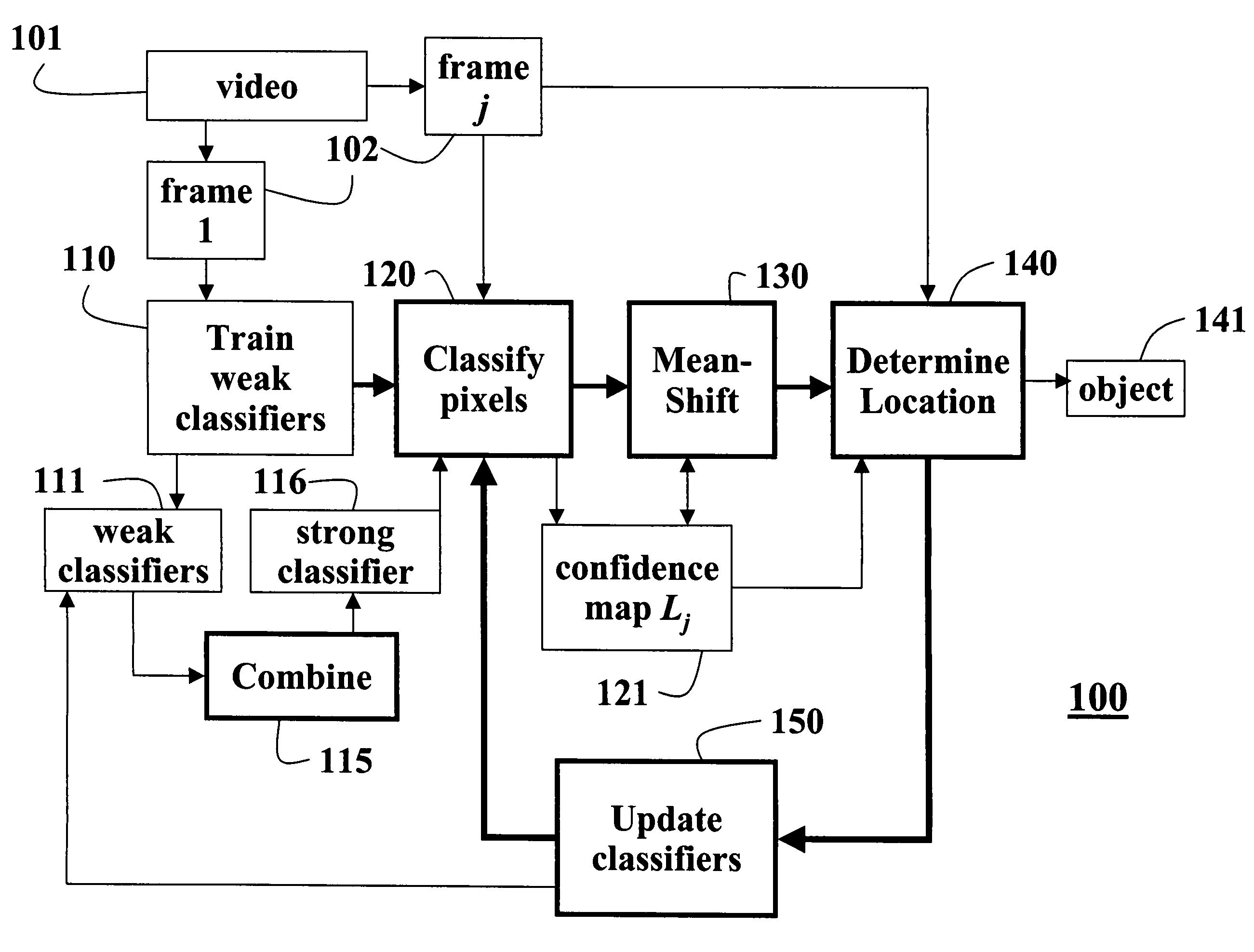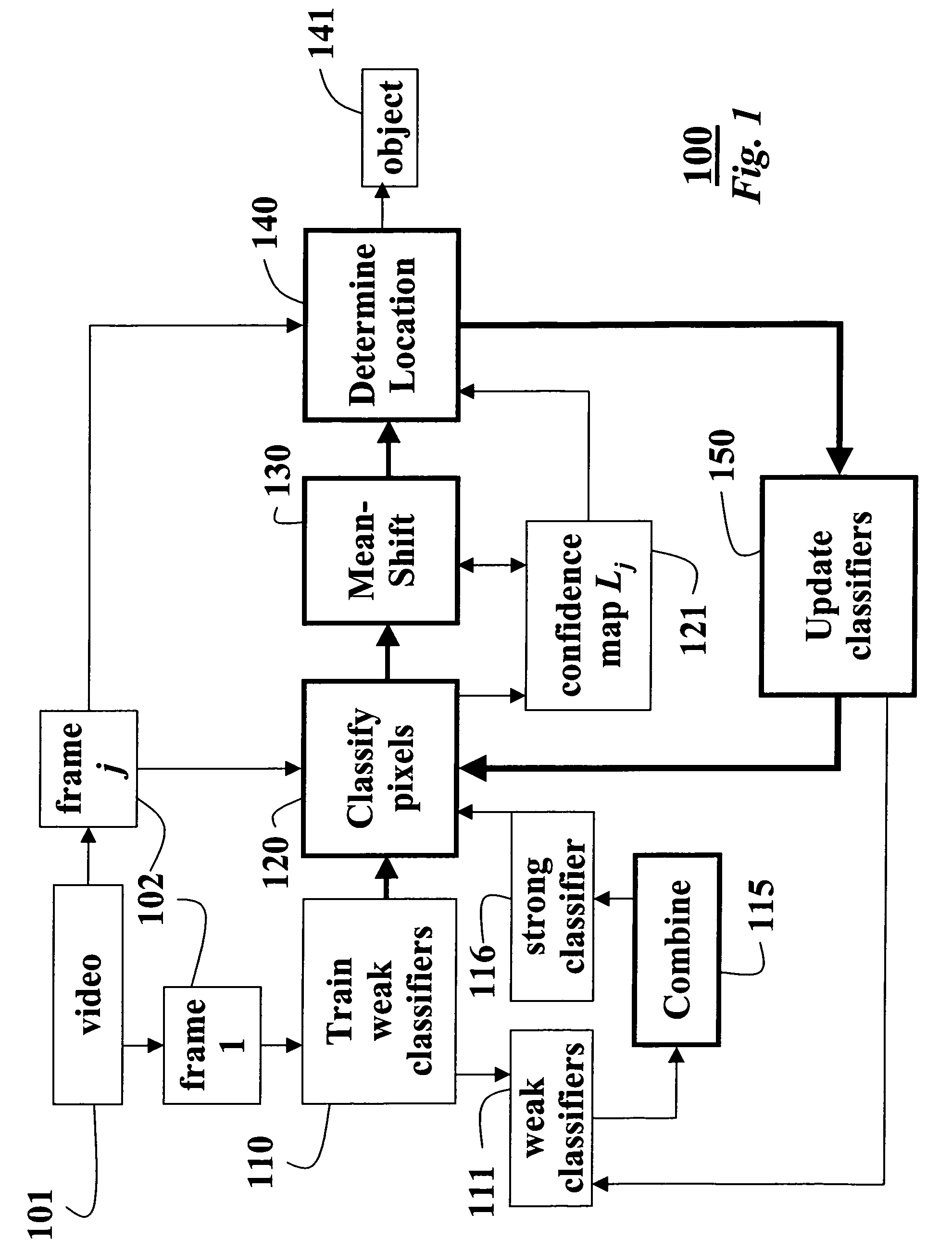Tracking objects in videos with adaptive classifiers
a technology of object tracking and classifier, applied in the field of computer vision, can solve problems such as the challenge of tracking objects, and achieve the effect of improving the stability of object tracking and being easy to compu
- Summary
- Abstract
- Description
- Claims
- Application Information
AI Technical Summary
Benefits of technology
Problems solved by technology
Method used
Image
Examples
Embodiment Construction
[0024]Object Tracking
[0025]The invention provides a method for tracking an object adaptively in a sequence of frames (images) of a video acquired of a scene by a camera. The invention allows a changing background and a moving camera. The invention treats object tracking as a binary classification problem with the object being in the ‘foreground’ and the remainder of the scene being the ‘background’.
[0026]A set of weak classifiers is updated for each frame. The weak classifiers are combined into a strong classifier. The strong classifier separates the object from the background. Weak classifiers can be added to the set or removed from the set at any time to incorporate changes in the appearance of the object and the background over time.
[0027]The invention does not represent the object explicitly. Instead, the set of classifiers determines whether a particular pixel is associated with the object or with the background. Each weak classifier is trained on positive and negative training...
PUM
 Login to View More
Login to View More Abstract
Description
Claims
Application Information
 Login to View More
Login to View More - R&D
- Intellectual Property
- Life Sciences
- Materials
- Tech Scout
- Unparalleled Data Quality
- Higher Quality Content
- 60% Fewer Hallucinations
Browse by: Latest US Patents, China's latest patents, Technical Efficacy Thesaurus, Application Domain, Technology Topic, Popular Technical Reports.
© 2025 PatSnap. All rights reserved.Legal|Privacy policy|Modern Slavery Act Transparency Statement|Sitemap|About US| Contact US: help@patsnap.com



